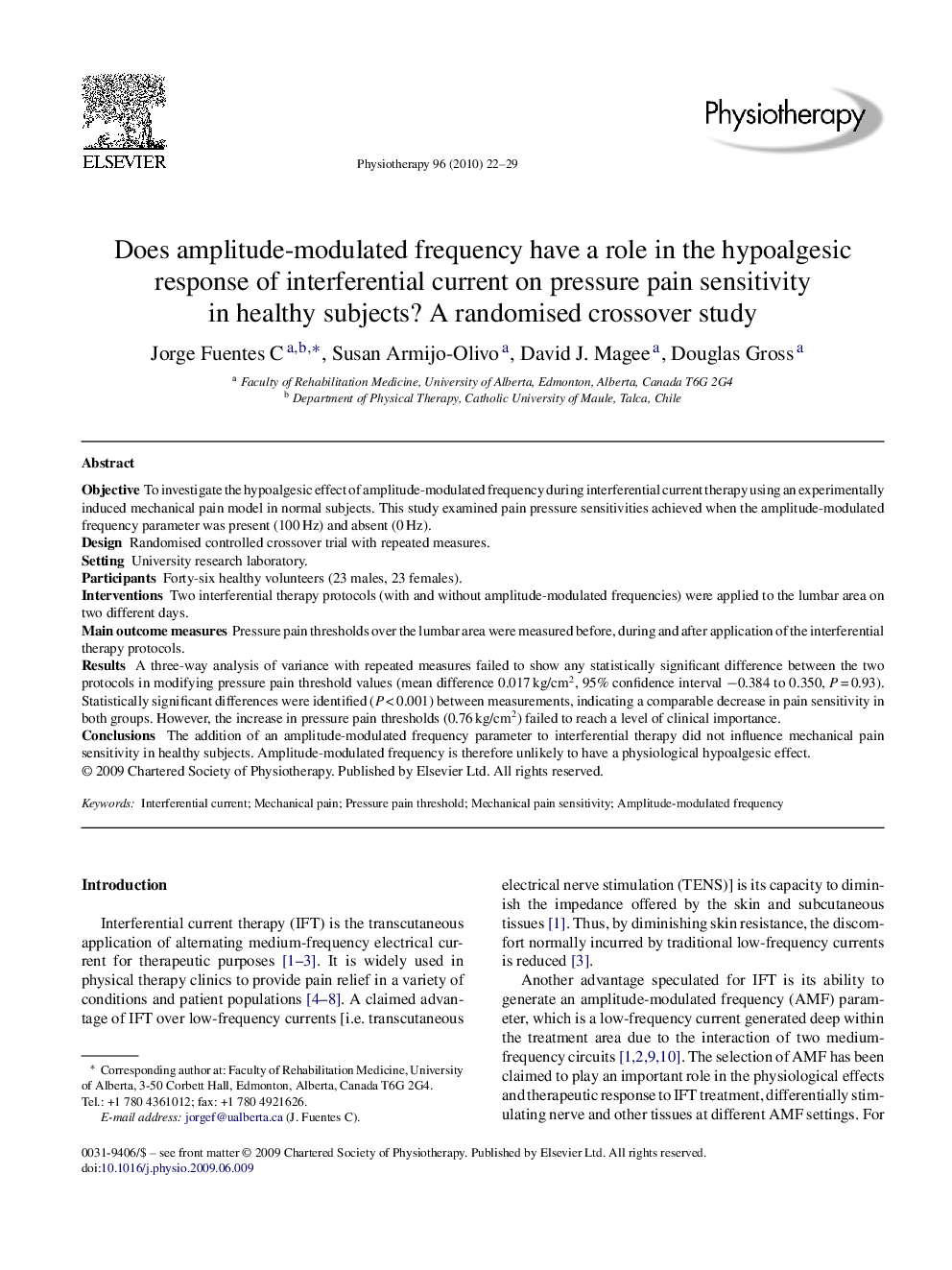| Article ID | Journal | Published Year | Pages | File Type |
|---|---|---|---|---|
| 2627323 | Physiotherapy | 2010 | 8 Pages |
ObjectiveTo investigate the hypoalgesic effect of amplitude-modulated frequency during interferential current therapy using an experimentally induced mechanical pain model in normal subjects. This study examined pain pressure sensitivities achieved when the amplitude-modulated frequency parameter was present (100 Hz) and absent (0 Hz).DesignRandomised controlled crossover trial with repeated measures.SettingUniversity research laboratory.ParticipantsForty-six healthy volunteers (23 males, 23 females).InterventionsTwo interferential therapy protocols (with and without amplitude-modulated frequencies) were applied to the lumbar area on two different days.Main outcome measuresPressure pain thresholds over the lumbar area were measured before, during and after application of the interferential therapy protocols.ResultsA three-way analysis of variance with repeated measures failed to show any statistically significant difference between the two protocols in modifying pressure pain threshold values (mean difference 0.017 kg/cm2, 95% confidence interval −0.384 to 0.350, P = 0.93). Statistically significant differences were identified (P < 0.001) between measurements, indicating a comparable decrease in pain sensitivity in both groups. However, the increase in pressure pain thresholds (0.76 kg/cm2) failed to reach a level of clinical importance.ConclusionsThe addition of an amplitude-modulated frequency parameter to interferential therapy did not influence mechanical pain sensitivity in healthy subjects. Amplitude-modulated frequency is therefore unlikely to have a physiological hypoalgesic effect.
